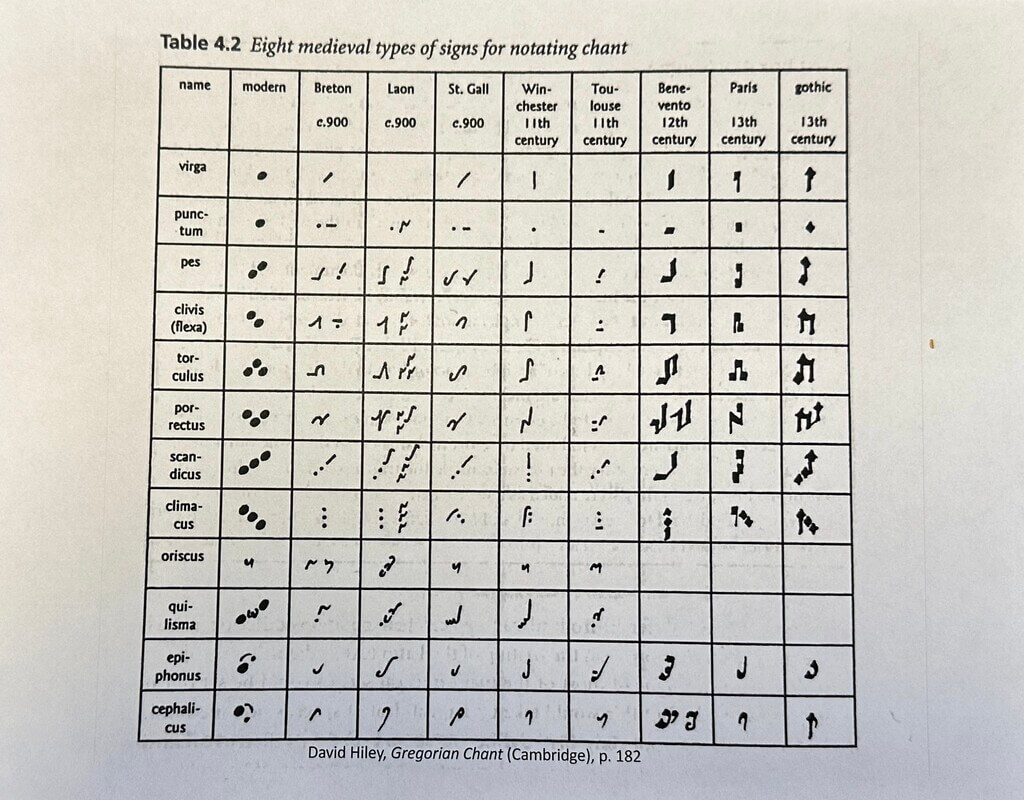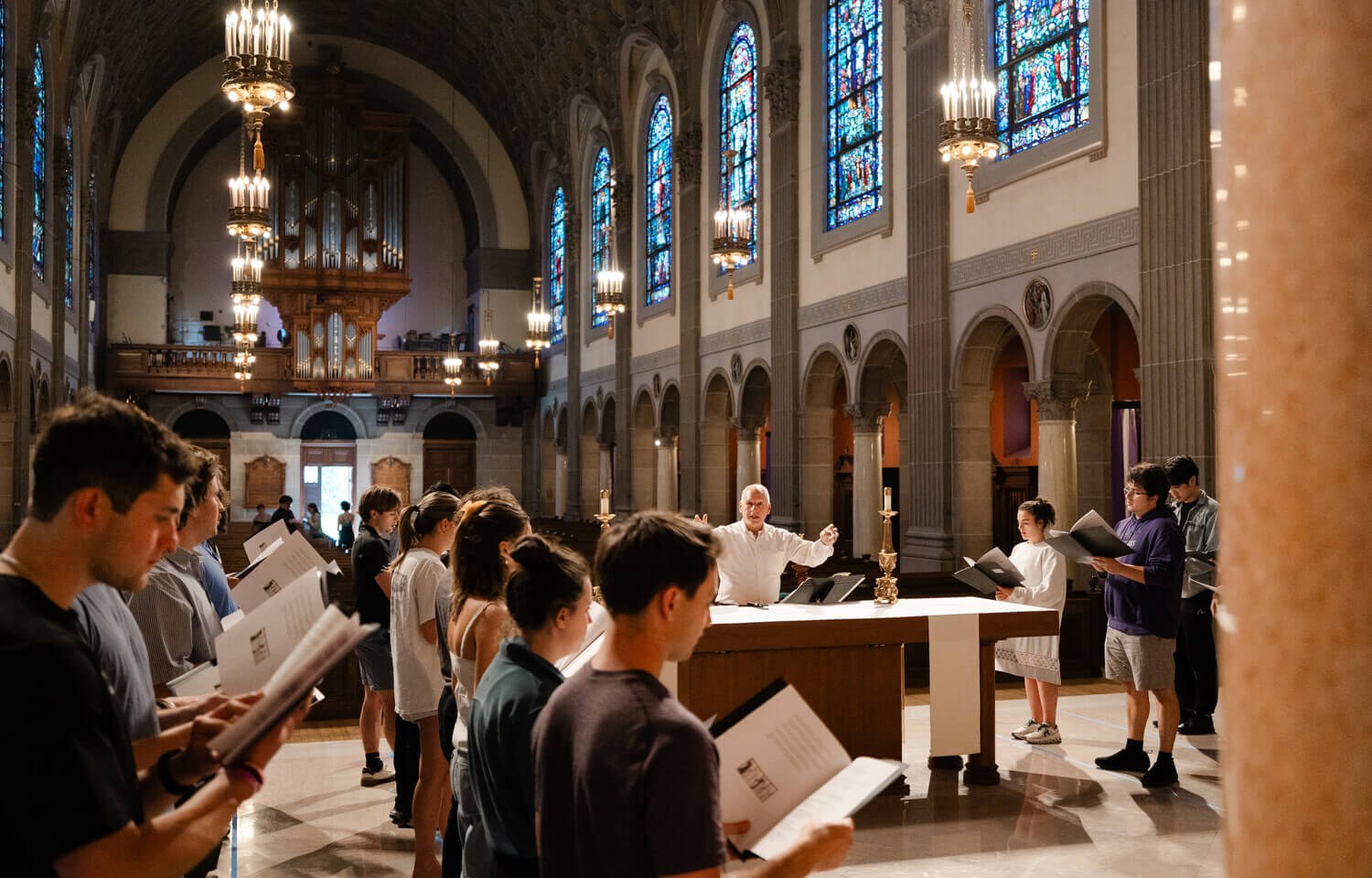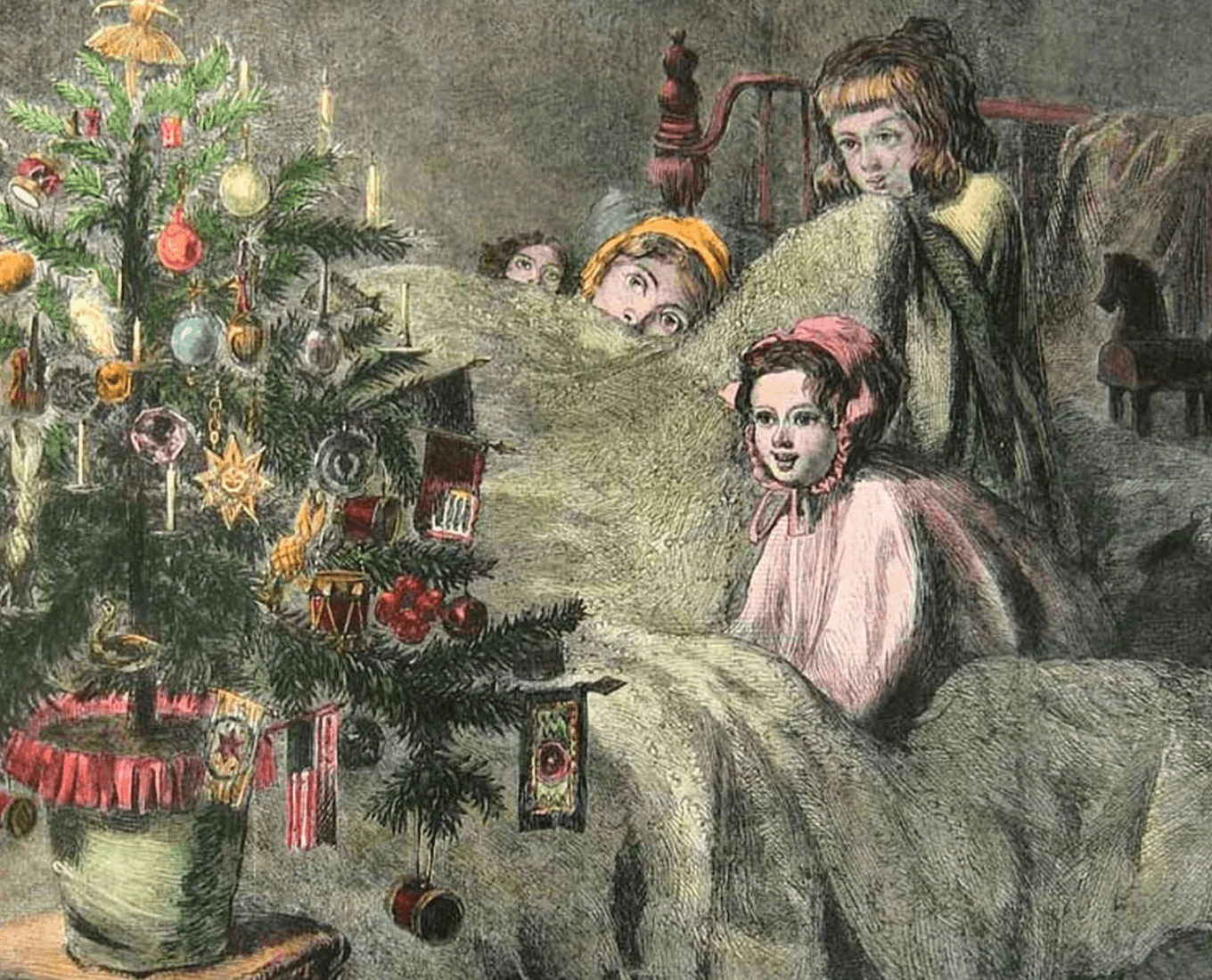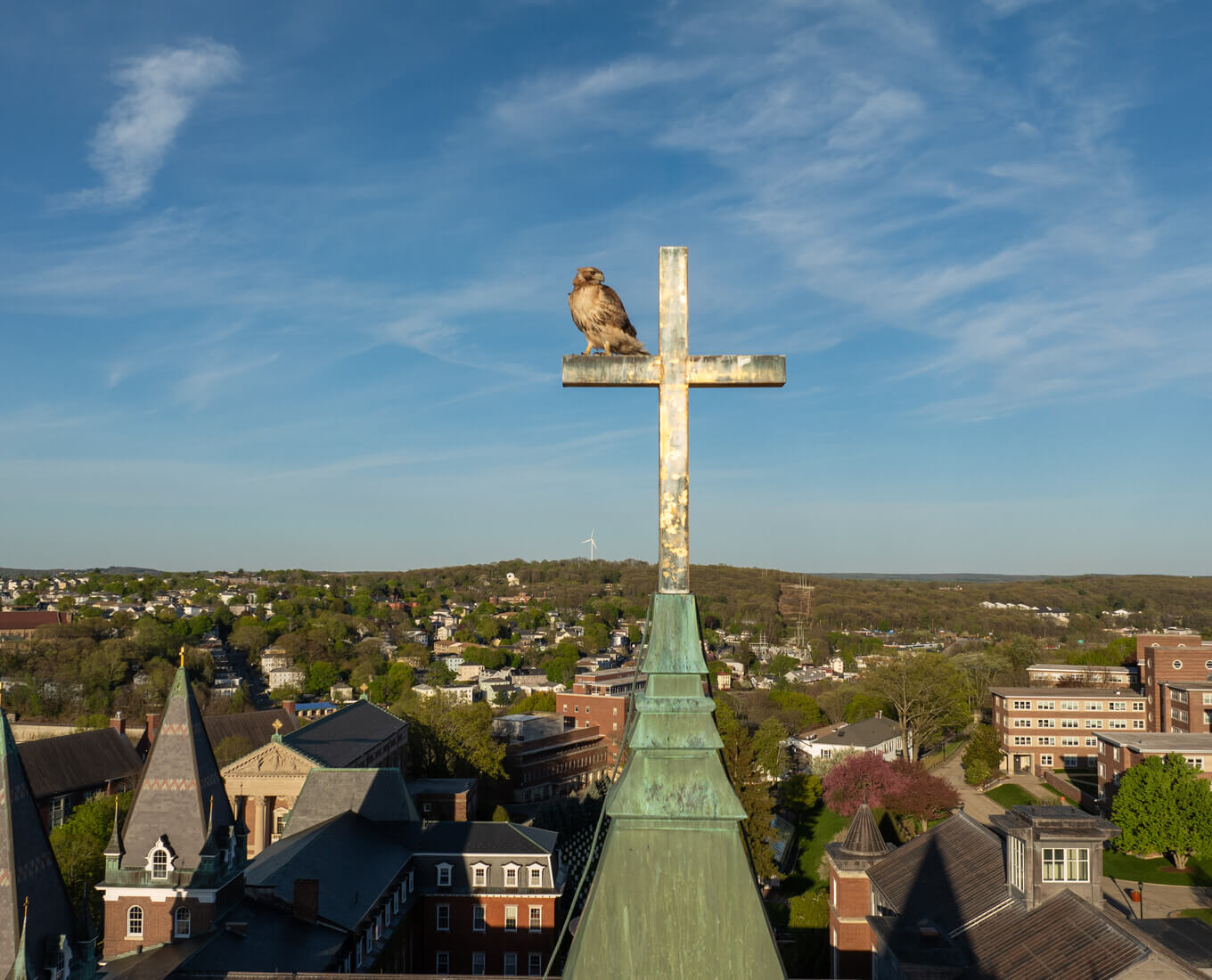It’s a Monday afternoon in February 2025, and Associate Professor of Music Daniel J. DiCenso ’98 is standing in front of a full class in Brooks Concert Hall speaking in a language that sounds like English. But any visitor without some understanding of the medieval world, monasticism, Early Christian history, Catholic liturgy and music theory who can’t read Latin or recognize millennium-old cursive is out of their depth moments after class starts.
“So, part of our exercise is to mine these shapes, these new shapes, out of the abstract,” explained DiCenso, also a specialist in medieval liturgy, as he pointed to a projected image.
To the untrained eye, the image appears to be Latin verse adorned with simple marks best described as squiggles and Emily Dickinson-esque dashes. One handout accompanying today’s lecture, “Table 4.2. Eight medieval types of signs for notating chant,” tracks the evolution of the Latinate marks — geographically and temporally — beginning with Breton, Laon and St. Gall, all circa 900, through 11th-century Wincester and Toulouse, 12th-century Benevento, 13th-century Paris and Gothic, to their modern form, which is mostly groupings of circles.

“Does anybody remember what the difference is between the curvy one and the pointed ones? The one that looks like the Nike swoosh versus the one that looks like a check mark?” DiCenso asked. “The check mark should be more … yeah, is more separated, and the one that’s more like the Nike swoosh is more connected in terms of the singing. It’s a very subtle direction to the singer.”
Welcome to one of Holy Cross’ most popular courses: Gregorian Chant.
Since its debut seven years ago, the course, co-taught by DiCenso and Laurence Rosania, visiting lecturer in the Department of Music and director of liturgy and music in the Office of the College Chaplains, has consistently grown in popularity, especially among non-majors. Only two of the students in the spring 2025 course were music majors, half were student-athletes, and only about half had any singing experience. The course typically caps at around 50 students, and there's always a waitlist.
Do DiCenso and Rosania find athletes and chant an unusual pairing? Not really. Rosania rowed crew for a time at Yale. Like athletics, chant involves teamwork, synchronicity and a sense of timing, he noted.
"It's a very physical act," Rosania said, his tone thoughtful. "It's an athletic act, really. And they respond to it like a team. It's a team sport."
‘We’re going to do it anyway’
Each class is divided into two parts: a lecture delivered by DiCenso and choral instruction conducted by Rosania. The two smiled at the observation that the variety and volume of material they cover in this 12-week course is rather staggering.
“So, you’re not going to learn how to read Latin, but you’ll learn how to pronounce it over time," DiCenso said. "And you could spend months learning every little nuance of each little notation and never actually get to using it, singing it or reading it. So, there are two ways into that problem.
“One approach is you need to have all those skills developed a priori, and until you do, you don’t jump in,” he continued. “The second is that we know you don’t have all those things, but we’re going to do it anyway. And so we teach you how to pronounce Latin in Italian, chant by chant, bit by bit, and the students get better and better.”
Rosania particularly enjoys the reaction of students upon transitioning from Brooks Concert Hall to the 101-year-old St. Joseph Memorial Chapel for vespers rehearsal; it's a revelation.
"They experience something very different, very powerful," Rosania said. "They're being lifted up in the sound of this building. We're creating sound, and then there's this other sound that's being created around us. Singing together in a space for which chant was designed: Suddenly it makes a lot more sense, and it becomes a lot easier to sing too."
In addition to the usual evaluation tools expected in a college course — classroom discussion, quizzes, graded homework and a midterm exam — students plan a liturgy, an end-of-semester Gregorian vespers (prayer) service performed at the chapel. No student is forced to perform; there is a written project for those who opt out of the public performance.
Most welcome the chance to sing, though.
Joseph A. Rowdis ’25 is a double major in economics and Italian and minoring in statistics. He’d attended Mass featuring Gregorian chant when studying abroad in Florence, Italy, in the fall of his junior year. Rowdis tried to enroll in Gregorian Chant when he returned to campus in spring 2024, but was waitlisted. This is a common issue for students: Interest outstrips class capacity.
Rowdis said he’s most enjoyed mastering canticles and psalms and seeing the class come together in song.
“I am grateful for how Gregorian chant allows me to translate what I learn academically in the classroom into reality through singing,” he said. “Gregorian chant provides a different type of learning, one you may not get in another class or at another school. You learn how relatable Gregorian chant is to reality, and as you progress through the semester, you will want to keep singing in Latin.”
Chemistry major Justin John ’25 added that the course addressed a spiritual need: “One of the things that I found and continue to find appealing about Holy Cross is the liberal arts curriculum. The fact that we are not only encouraged but expected to explore fields outside of our own has allowed me to explore ideas and subjects I never would have done otherwise, and I am all the better for it.
"Gregorian chant is completely unrelated to my major; yet, it is a subject that is very deeply connected with my faith, which I hold dear," he continued. "The appeal of the class is two-fold: a curriculum that encourages my desire to explore diverse subjects as an exercise in intellectual curiosity and the connection the topic has to my Catholic faith.”



